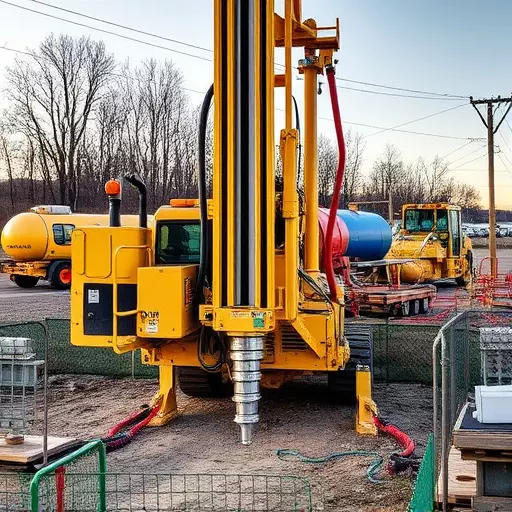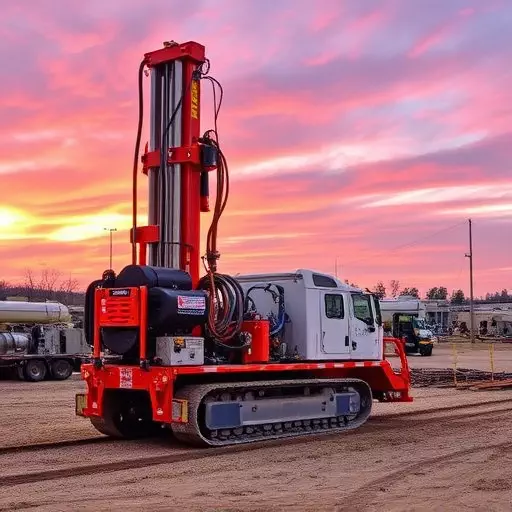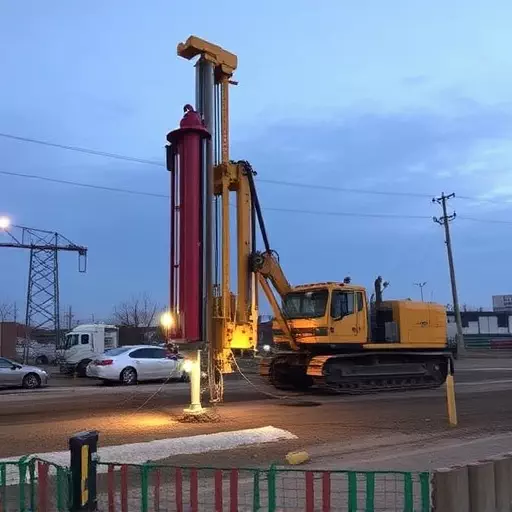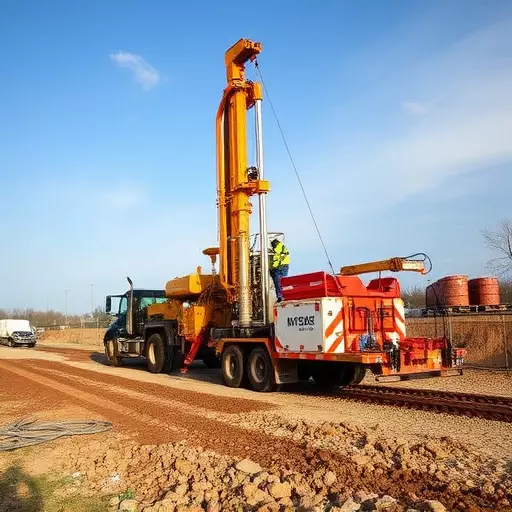Directional Boring Toledo, powered by Horizontal Directional Drilling (HDD) and trenchless technology, revolutionizes underground construction. This method precisely excavates and installs utilities like pipelines and cables without traditional trenching, minimizing ground disturbance. In urban areas, HDD offers significant advantages over conventional methods, reducing construction time and costs while avoiding damage to existing infrastructure. Real-world projects demonstrate up to 30% faster excavation times and minimal disruptions, making it an eco-friendly option that conserves water and landscapes, aligning with sustainability goals.
“Explore the transformative potential of Directional Boring in urban infrastructure development. This article delves into the innovative Horizontal Directional Drilling (HDD) technology, highlighting its advantages in dense cityscapes like Toledo. We examine successful projects that showcase the efficiency and minimal disruption of this Trenchless Technology. Additionally, we discuss its environmental benefits, positioning HDD as a sustainable solution for urban digging. Discover how this method revolutionizes construction, offering a more precise, faster, and eco-conscious approach to underground infrastructure development.”
- Understanding Directional Boring Technology and Its Principles
- Advantages of Horizontal Directional Drilling in Urban Settings
- Case Studies: Successful Directional Boring Projects in Toledo
- The Environmental Impact of Trenchless Technology
Understanding Directional Boring Technology and Its Principles

Directional boring, also known as horizontal directional drilling (HDD), is a revolutionary trenchless technology that has transformed underground construction. This advanced method allows for precise excavation and installation of utilities without the need for traditional trenching methods. By directing a drill bit horizontally along a predetermined path, HDD can install pipelines, cables, or other utilities with minimal impact on the surrounding area.
The principles behind directional boring involve utilizing specialized equipment and techniques to navigate through diverse soil conditions. The process begins by creating an entry and exit point for the drill string, often using surface access points. Once positioned, a high-pressure fluid system is employed to push the drill bit forward while removing cuttings. This innovative approach ensures efficient and precise excavation, reducing time and labor costs significantly. With its ability to install utilities in tight spaces and minimize ground disturbance, directional boring is becoming the preferred method for many infrastructure projects, offering both cost savings and reduced environmental impact.
Advantages of Horizontal Directional Drilling in Urban Settings

In urban settings, Horizontal Directional Drilling (HDD) offers significant advantages over traditional excavation methods. As a form of trenchless technology, HDD minimizes disruption to existing infrastructure and utilities, making it ideal for densely populated areas. By guiding pipes or cables along predetermined underground paths, this method eliminates the need for deep trenches, reducing construction time and costs.
Furthermore, directional boring in Toledo and other urban centers allows for more precise placement of utilities, enhancing overall project efficiency. This precision also helps to avoid damage to underground structures, which can be costly and time-consuming to repair. With its ability to navigate around obstacles and narrow spaces, HDD ensures that construction projects in urban environments can be completed faster and with less impact on daily life.
Case Studies: Successful Directional Boring Projects in Toledo

Directional boring projects in Toledo have showcased the immense time efficiency gains possible with horizontal directional drilling (HDD) technology. These case studies highlight successful implementations where trenchless technology was employed to minimize disruptions and speed up construction timelines. For example, a recent project involved installing utility lines beneath a heavily trafficked urban area using HDD methods. The process allowed for continuous excavation and installation without the need for extensive road closures or traffic diversions, significantly reducing both project duration and associated costs.
Another notable case in Toledo demonstrates the versatility of directional boring. A water main replacement project utilized HDD to navigate challenging underground conditions, including tight spaces and diverse soil types. Despite these obstacles, the technology enabled precise targeting and efficient progress, leading to a 30% reduction in excavation time compared to traditional methods. These real-world applications illustrate how directional boring can revolutionize infrastructure development by offering faster, more disruptive-free alternatives for utility installations.
The Environmental Impact of Trenchless Technology

The adoption of trenchless technology, such as Horizontal Directional Drilling (HDD), in construction projects like directional boring Toledo has significant environmental benefits. HDD allows for the installation of utilities underground without the need for large, disruptive excavation sites. This minimizes surface disturbance, preserving landscapes and reducing the potential for habitat destruction.
Furthermore, trenchless methods significantly cut down on water usage compared to traditional open-cut techniques. By eliminating the need for deep trenches and extensive digging, these technologies conserve water resources that would otherwise be required for cooling and hydration during excavation. This conservation contributes to overall sustainability goals, making directional boring Toledo a more eco-friendly option for infrastructure development.


